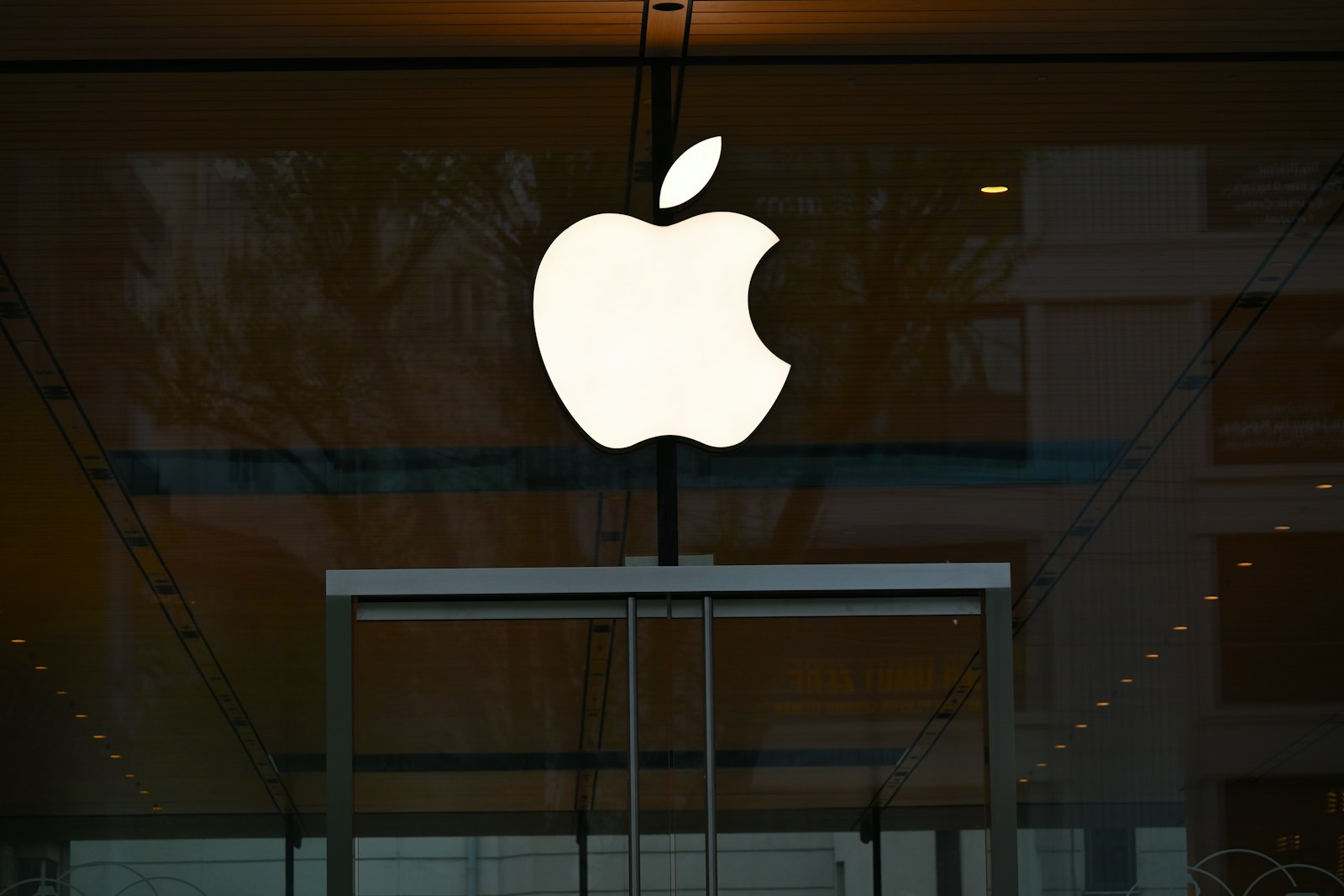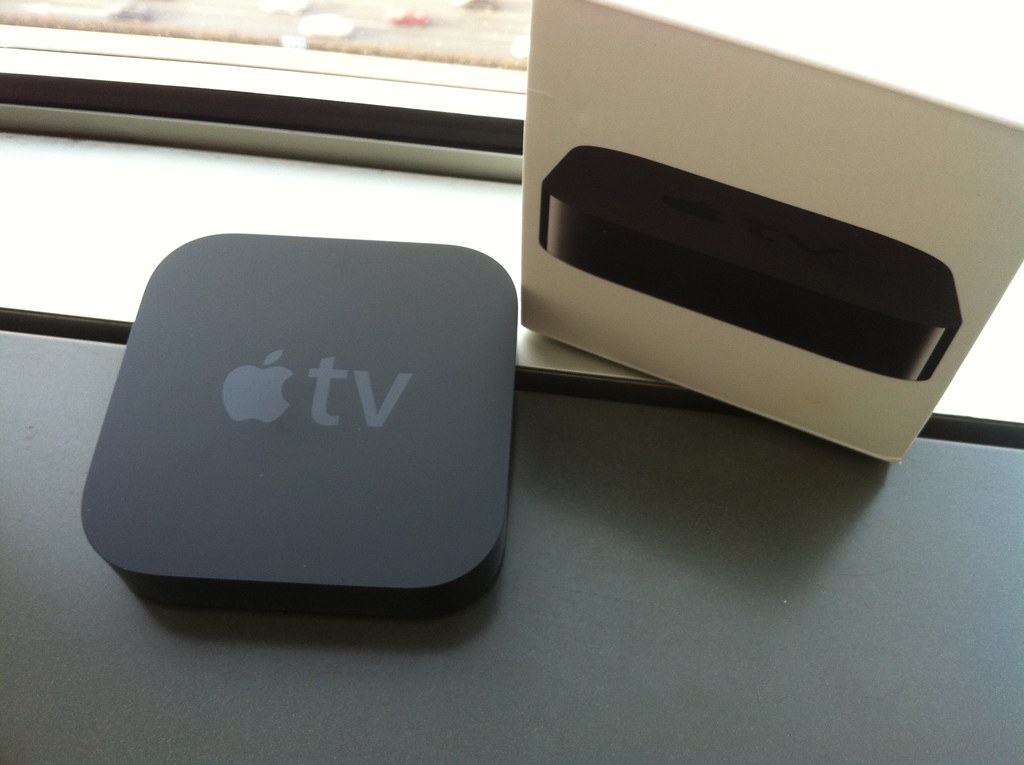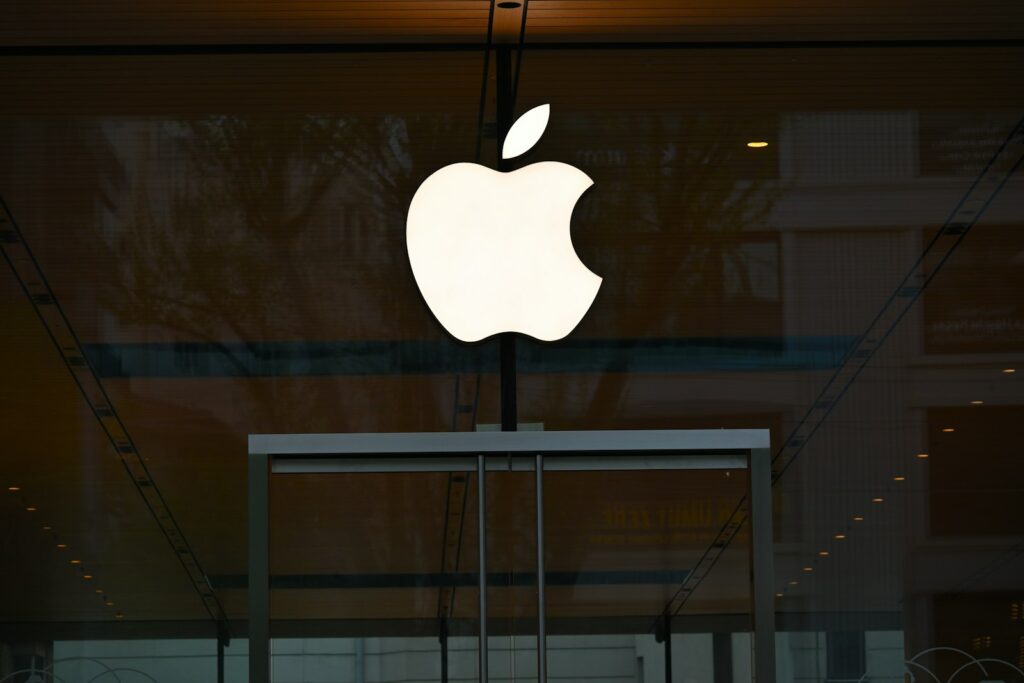
Apple has once again demonstrated its remarkable resilience and strategic acumen, navigating a complex global trade landscape to deliver a record-breaking June fiscal quarter. The tech giant’s latest financial results showcase robust growth, particularly in its flagship iPhone business, even as it grapples with the ongoing implications of evolving tariff policies. This formidable performance provides a compelling narrative of adaptation and forward-thinking leadership in an unpredictable economic climate.
During the company’s fiscal third quarter, which concluded on June 28, Apple reported a staggering just under $44.6 billion in revenue from its iPhone business. This represented an impressive 13% increase compared to the previous year, underscoring the enduring appeal and market dominance of its smartphone offerings. These stellar iPhone sales were a primary catalyst, propelling Apple to a total revenue of $94 billion for the quarter, marking yet another June quarter record for the company and a substantial 10% increase from last year’s figures.
Despite these impressive gains, the period was not without its financial challenges directly attributable to the contentious U.S. trade policies. Apple acknowledged that tariff-related costs contributed approximately $800 million to its expenses during the June quarter. This significant sum was primarily due to the company’s proactive measures, including the strategic shifting of production to countries outside the primary tariff zones and the diligent building up of supplies in anticipation of new tariffs taking effect.

Indeed, the specter of tariffs loomed large, particularly concerning China, where a significant portion of Apple’s products are assembled. There was considerable speculation about how much the threat of these levies might “pull forward” consumer purchases, prompting individuals to buy new phones sooner to pre-empt potential price hikes later in the year. However, Apple’s CEO Tim Cook offered a nuanced perspective on this phenomenon during the earnings call.
Cook indicated that while there was some degree of “pull forward” demand—a term describing early upgrades driven by tariff discussions—its overall impact was more limited than many might have assumed. He specifically attributed the larger-than-expected sales increase to the inherent allure and strong market reception of the iPhone 16 family. Cook explicitly stated, “The [iPhone] 16 family grew double-digits, as opposed to the 15 family from the year-ago quarter.”
Elaborating on the specific quantification of this accelerated purchasing, Cook acknowledged that Apple enjoyed a record quarter for iPhone upgrades. He estimated the “pull forward of demand into April, specifically, to be about 1 point out of 10 points in terms of people buying because of discussions about tariffs.” This suggests that while tariffs had a measurable effect, the core strength of the product line remained the dominant sales driver.
The impact of tariffs and the associated “pull forward” sales was not confined solely to the iPhone sector. Apple’s Mac business also experienced a noticeable bump, recording a 13% increase in revenue to reach $8 billion during the June quarter. This broad-based performance across key product categories highlights the company’s multifaceted revenue streams.
Beyond product sales, Apple’s Services division continued its impressive trajectory, reaching an all-time high with revenue growth of 13% to $27.4 billion. This segment, encompassing offerings like Apple News+ and Apple TV++, demonstrated robust expansion. Apple TV+, in particular, enjoyed a particularly strong quarter, with viewership surging by “strong double digits,” buoyed by hits such as the F1 film and critically acclaimed shows like *Severance* and *The Studio*, which garnered a combined 50 Emmy nominations.
Looking ahead, Apple remains clear-eyed about the persistent challenge posed by tariffs. The company estimates that the current September fiscal quarter will see an additional $1.1 billion added to its expenses directly related to tariffs, assuming no changes to current policies. Despite this projected financial hit, Apple provided analysts with an optimistic outlook, forecasting mid-to-high single-digit revenue growth for the September quarter.
A significant element of Apple’s forward strategy, reiterated by Tim Cook, involves a concerted effort to mitigate the long-term effects of tariffs. This strategy, first outlined during the March quarter earnings announcement, focuses heavily on optimizing Apple’s expansive global supply chain. Critically, Cook emphasized a renewed commitment to expanding domestic manufacturing, stating, “Ultimately, we will do more in the United States.”
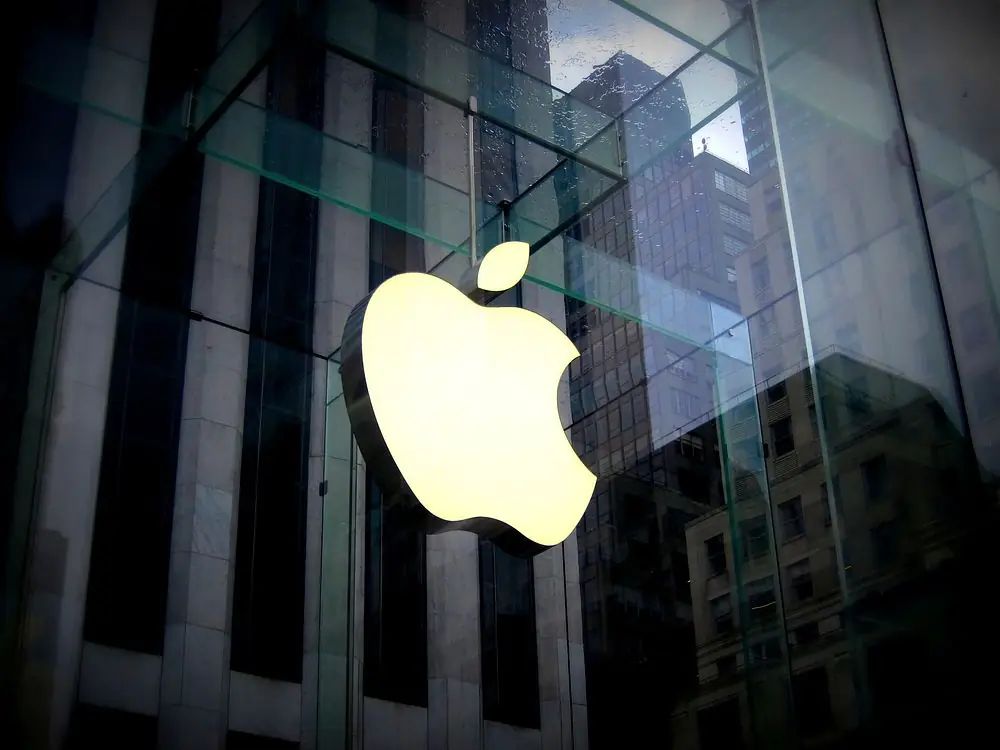
This commitment is backed by substantial financial pledges, including a staggering $500 billion investment in the U.S. over the next four years. Practical manifestations of this strategy are already underway, with Apple actively building chips in Arizona and semiconductors across 12 states and 24 factories. Furthermore, the company has “a lot of other things in the works,” including the launch of a manufacturing academy in Detroit, signaling a comprehensive approach to re-shoring production.
The broader context of Apple’s tariff challenges is deeply rooted in the evolving U.S.-China trade relations, particularly under President Donald Trump’s second term. The initial presidency was characterized by a U.S.-China trade war that saw high tariffs levied against Chinese imports, but Apple largely managed to steer clear, thanks in part to Tim Cook’s positive relationship with then-President Trump.
However, with Trump’s return to office, import tariffs have re-emerged as a major global issue, directly impacting companies like Apple. It’s a fundamental economic principle that exporting countries generally don’t pay tariffs; rather, importing companies bear the burden, which is then typically passed on to consumers. This time, Apple has found itself squarely in the crosshairs, facing financial challenges beyond just hits to its share price as the tariff battle intensifies.
In the lead-up to Trump’s second term, specifically on November 11, 2024, the President-Elect expressed strong intent to apply tariffs on imports globally, aligning with a broader goal of bringing manufacturing back to the United States. A 22-page report from the Consumer Technology Association (CTA) outlined the potential global impact, noting that while most countries might face 10% or 20% tariff bands, China was anticipated to receive a significant 60% tariff. The CTA report cautioned against “unintended consequences,” including a deteriorated U.S. reputation and increased trade restrictions.
Product on Amazon: Motorola Moto G – 2025 | Unlocked | Made for US 4/128GB | 50MP Camera | Forest Gray
Brand: Visit the Motorola Store
Price: 174.9 USD
Rating: 4.2 Total reviews: 2669
Operating System: Android 15
Ram Memory Installed Size: 4 GB
CPU Model: Others
CPU Speed: 2.4 GHz
Memory Storage Capacity: 12 GB
Screen Size: 6.7 Inches
Resolution: HD+ (1604 × 720) | 263ppi
Refresh Rate: 120 Hz
Model Name: Moto G – 2025
Shopping on Amazon >>

Apple, however, was perceived to be in a relatively stronger position compared to the previous tariff skirmishes. This was largely due to its proactive establishment of manufacturing bases outside of China, notably in India and other countries. The prevailing thought was that iPhones destined for the U.S. market could be produced in these lower-tariff regions, thereby mitigating costs, while China-produced iPhones would serve the rest of the world.
Further escalating concerns, on January 27, 2025, during a speech in Miami, Trump specifically targeted foreign-produced computer chips and semiconductors with tariff threats. He reiterated the need to return production to the United States, singling out Taiwan’s dominance, in a clear reference to Apple’s chip partner TSMC. Trump asserted that TSMC, already a multi-billion-dollar entity, wouldn’t require financial incentives like the CHIPS Act, believing that the absence of tax obligations would be sufficient motivation for them to build factories with their own money in the U.S.
In a retaliatory move, on February 5, 2025, China reportedly considered an antitrust investigation into Apple’s App Store. This was part of potential countermeasures in response to the looming tariff prospects. Reports suggested that China’s State Administration for Market Regulation might probe Apple’s App Store fees, its 30% commission on purchases, and its policies concerning third-party payments and app storefronts. Notably, China had concluded a previous investigation into the App Store in May 2024, at which time determined that Apple had not abused its market position.
The high-stakes discussions continued with a direct engagement between Apple’s CEO, Tim Cook, and President Trump. On February 20, 2025, Cook was observed entering the White House for a meeting lasting approximately 45 minutes. While specific details were not disclosed, Cook characterized it as a “great meeting” with the President, a visit widely believed to have centered on the import tariff situation and Apple’s U.S. manufacturing plans.
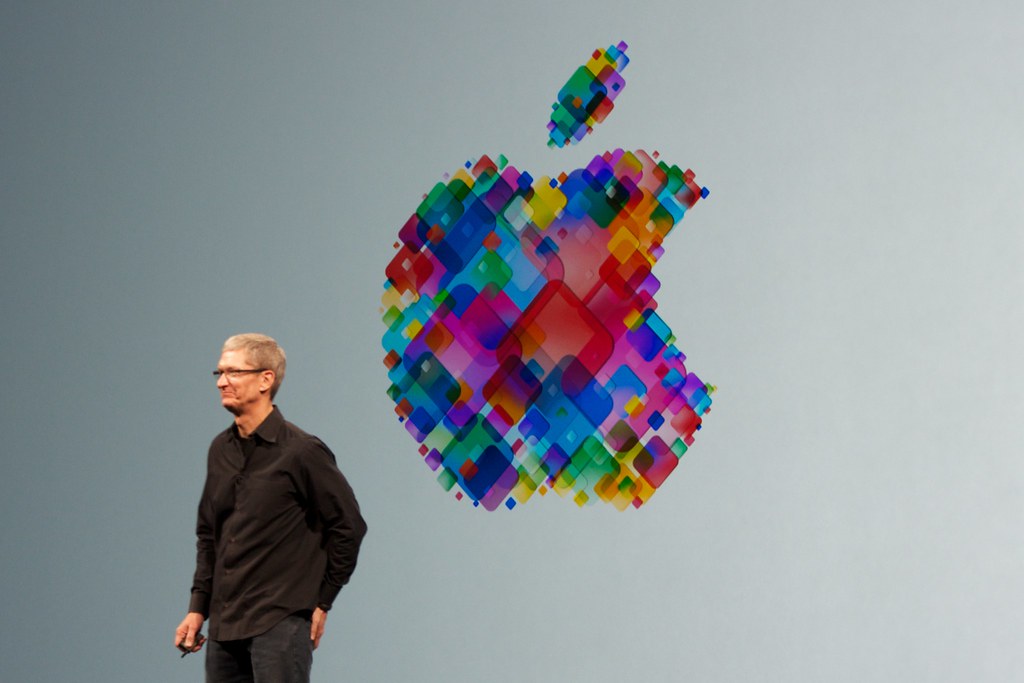
Concurrent with Cook’s visit, Bank of America analysts released a report on February 20, 2025, estimating that Apple would face a minimum 10% tariff regardless of its manufacturing diversification efforts. They calculated that Apple could absorb this cost in the short term, resulting in a loss of 26 cents in earnings per share, or a 3% drop across the 2026 calendar year. Alternatively, if Apple chose to partially offset costs by raising prices by 3%, it would still face a 2.4% slide and a 21-cent per-share earnings drop. The analysts ominously forecasted that if Apple passed the full increased cost onto buyers, coupled with an associated decrease in sales, prices would have to rise by 9%.
The global supply chain, already complex, faced additional anxieties. On March 14, 2025, Foxconn CEO Young Liu, whose company is a key Apple assembly partner, acknowledged that geopolitics and tariffs were indeed problematic for its clients. Liu warned that these factors would introduce significant challenges for manufacturers, potentially leading to a drop in demand. Although Apple was not directly mentioned, Liu confirmed that multiple clients were engaged in discussions with Foxconn regarding manufacturing plans in the U.S., signaling a broader industry trend towards domestic production.
The tariff landscape dramatically shifted on April 2, 2025, a day Trump styled as “Liberation Day.” The President unveiled a system of “reciprocal tariffs” against nearly every country, with rates ranging from 10% to 49%, varying by nation. These figures were ostensibly derived by halving existing tariffs on U.S. goods from these countries and applying them in return. The administration dubbed the Rose Garden event “Make America Wealthy Again.
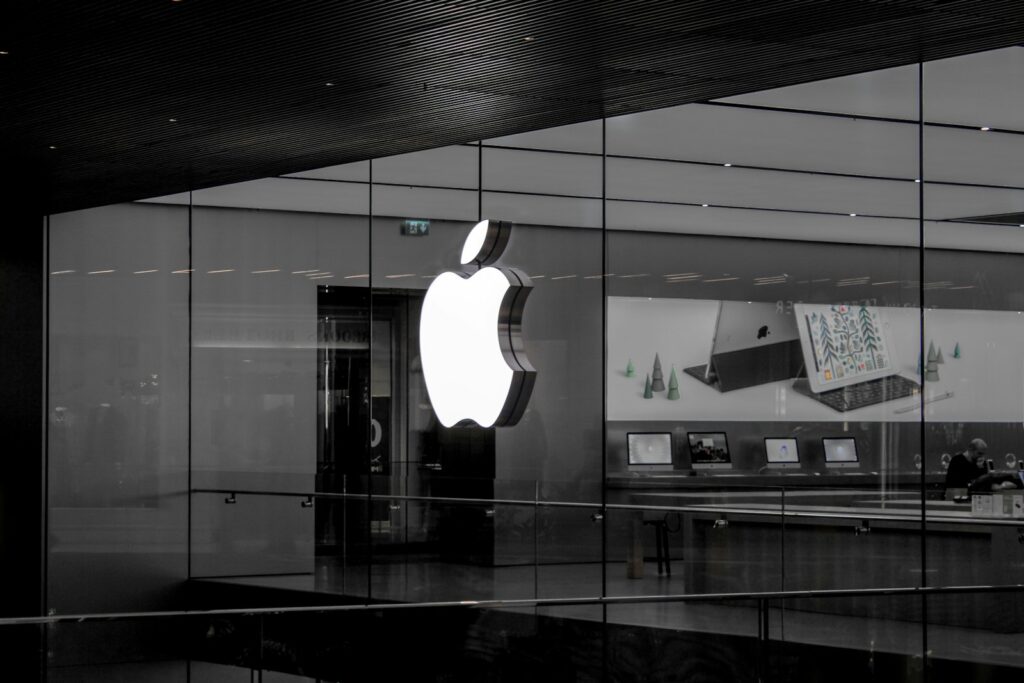
For Apple, the most critical element of this announcement was the 34% import tariff levied against China. Given that 80% of Apple’s production capacity and 90% of its iPhones are manufactured in China, this policy had the potential to inflict severe financial pain. While India faced a 26% tariff and Vietnam a 46% tariff, the relatively lower rate for India offered a glimmer of hope that Apple could potentially import U.S.-bound iPhones from there to minimize costs.
China’s response was swift and definitive. On April 4, 2025, it announced its own retaliatory tariffs on United States imports, matching the U.S.’s total effective tariff of 54% (including the new 34% reciprocal version) with a 34% tariff on U.S. goods entering China. President Trump, from a golf course, dismissed China’s move as “panicked,” insisting it was “the one thing they cannot afford to do” and predicting that the U.S. economy would “boom.
However, the stock market did not share Trump’s sanguine view. By noon on April 4, Apple’s stock (AAPL) was trading at $195.63, a significant drop from its pre-announcement high of $225.19. The market’s immediate reaction underscored the deep concerns over the escalating trade tensions.
For consumers, the financial implications were projected to be severe. Rosenblatt Securities, on April 4, forecasted massive price increases for Apple products, suggesting a 43% iPhone price rise could push the base model iPhone 16 to over $1,140, and the 1TB iPhone 16 Pro Max to nearly $2,300. Other analysts offered slightly more conservative estimates, with Counterpoint Research predicting a 30% increase and CFRA Research a 10% figure for the immediate future, with higher levels for the upcoming iPhone 17. Morgan Stanley estimated the total tariff cost to Apple could be in the range of $33 billion to $40 billion.
Product on Amazon: Apple iPhone 12, 64GB, Black – Fully Unlocked (Renewed)
Brand: Visit the Amazon Renewed Store
Price: 214.43 USD
Rating: 4.1 Total reviews: 31901
Operating System: iOS 16
Ram Memory Installed Size: 8 GB
CPU Model: 1.2GHz Cortex A8 Processor
CPU Speed: 1.2 GHz
Memory Storage Capacity: 64 GB
Screen Size: 6.1 Inches
Resolution: 2532 x 1170
Refresh Rate: 60 Hz
Model Name: iPhone 12
Shopping on Amazon >>
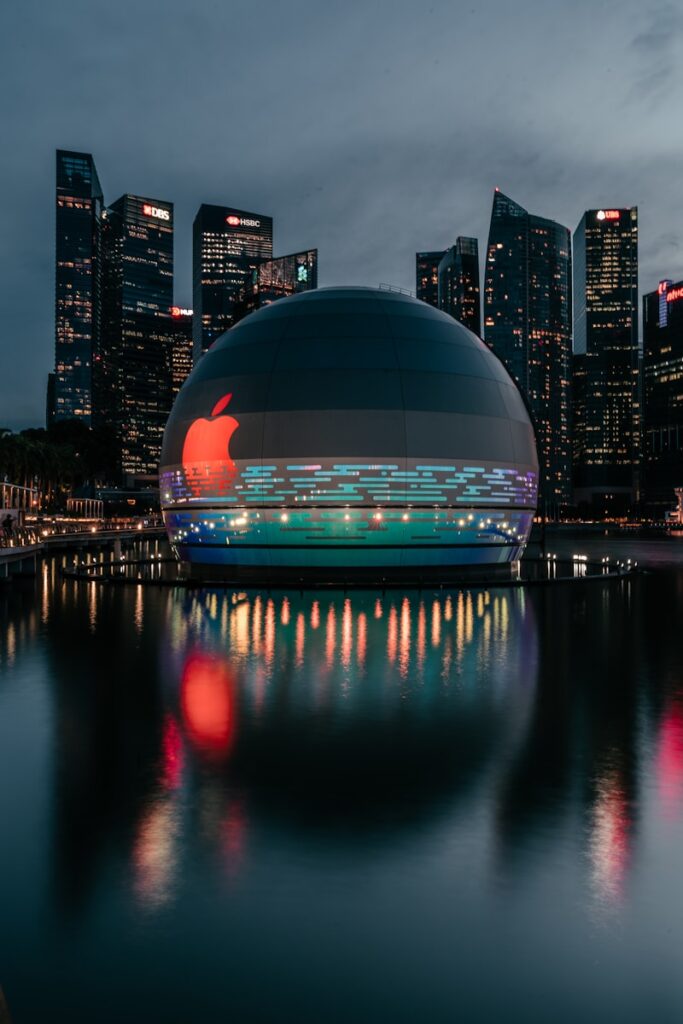
The threat of these impending price hikes spurred a wave of “panic-buying” among consumers. An April 7 report indicated that U.S. Apple Stores experienced traffic levels comparable to holiday seasons, as on-the-fence buyers rushed to purchase iPhones before potential increases. Consumers frequently inquired about price changes, though Apple store employees had no official corporate guidance on the matter.
In an attempt to pre-empt the tariffs, Apple reportedly undertook significant logistical operations in the last week of March, shipping an increased volume of products to the United States. Over three days, five flights were utilized to transport Apple products from both China and India to U.S. warehouses, which reportedly already held several months’ worth of stock, indicating a proactive inventory management strategy.
Yet, market volatility continued. On April 7, Trump upped the ante further, threatening to increase the tariff on Chinese imports to 104%, building on the existing 34% reciprocal tariff with an additional 50%. This would effectively double the cost of every component or device imported from China. By midday, AAPL was down another 5.3%, closing at $181.46. The broader market mirrored this distress, with the S&P 500 briefly entering bear market status, and U.S. stocks collectively dropping about 20%.
Product on Amazon: Apple iPhone 14, 128GB, Midnight – Unlocked (Renewed)
Brand: Visit the Amazon Renewed Store
Price: 353.93 USD
Rating: 4.1 Total reviews: 5930
Operating System: iOS 16
Ram Memory Installed Size: 6 GB
CPU Model: Others
CPU Speed: 3.23 GHz
Memory Storage Capacity: 128 GB
Screen Size: 6.1 Inches
Resolution: 2532 x 1170
Refresh Rate: 60 Hz
Model Name: iPhone 14
Shopping on Amazon >>
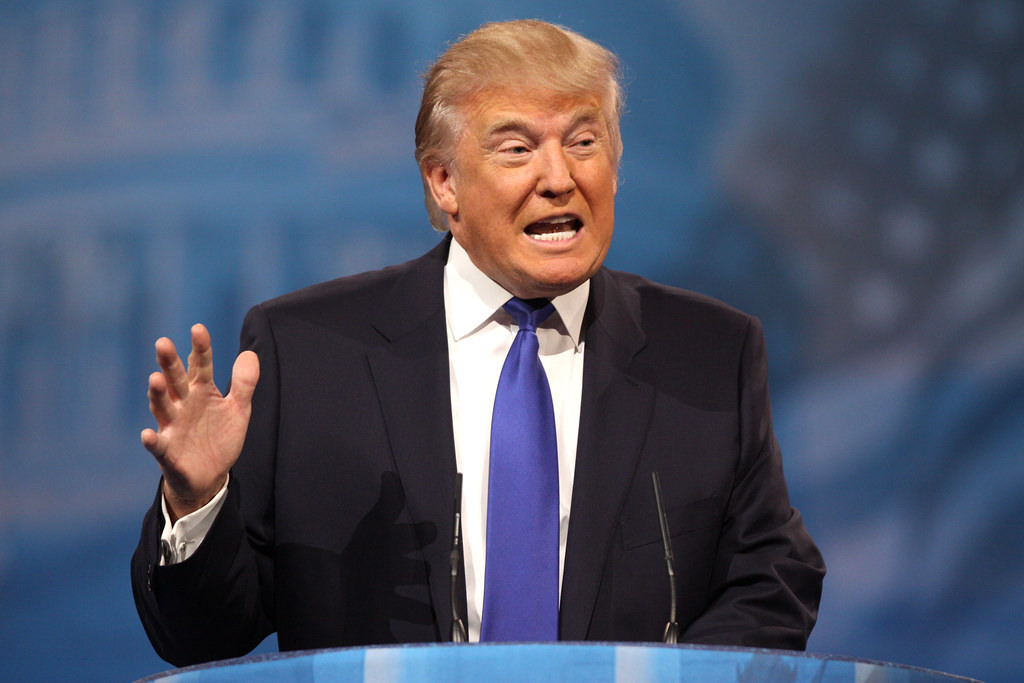
The escalations did not cease. On April 9, China responded by increasing its tariff on U.S. imports to 84% (a 50% increase on the previous 34%). The European Union also entered the fray, declaring the U.S. tariffs “unjustified and damaging” and announcing its own retaliatory tariffs to be implemented in two phases, starting April 15 and May 15. The EU, however, signaled an openness to negotiations.
In a surprising turn of events, later on April 9, Trump announced a 90-day pause on new tariffs against most countries, reducing the reciprocal tariff to 10% during this period. The stated aim was to allow time for negotiations with over 75 countries. However, China was explicitly excluded from this reprieve; instead, tariffs against China were further jacked up to 125% due to the country’s “lack of respect,” as Trump claimed.
Despite the punitive measure against China, the overall announcement was seen as largely positive for Apple. Shortly after, the Dow surged by 2,000 points, and Apple’s stock itself experienced a significant bump, rising 11.28%. AAPL closed at $198.85, up 15.3% from the previous day’s close, and its market capitalization recovered to $2.99 trillion, nearly reaching its former $3 trillion level. Following market close, Trump hinted at potential tariff exemptions for companies “hit harder” by the levies, with decisions based on his “instinct.
This brief recovery was short-lived. On April 10, the markets resumed a downward trajectory. Apple’s shares ended the day down 4.24% at $190.42, reaching a midday low of $183. Part of the renewed concern stemmed from a clarification from the White House: while Trump declared a 125% tariff, the actual total tariff against China was 145%. Investors were also apprehensive that the 90-day pause might not prevent a slowdown in economic activity due to Trump’s continued aggressive stance against China.
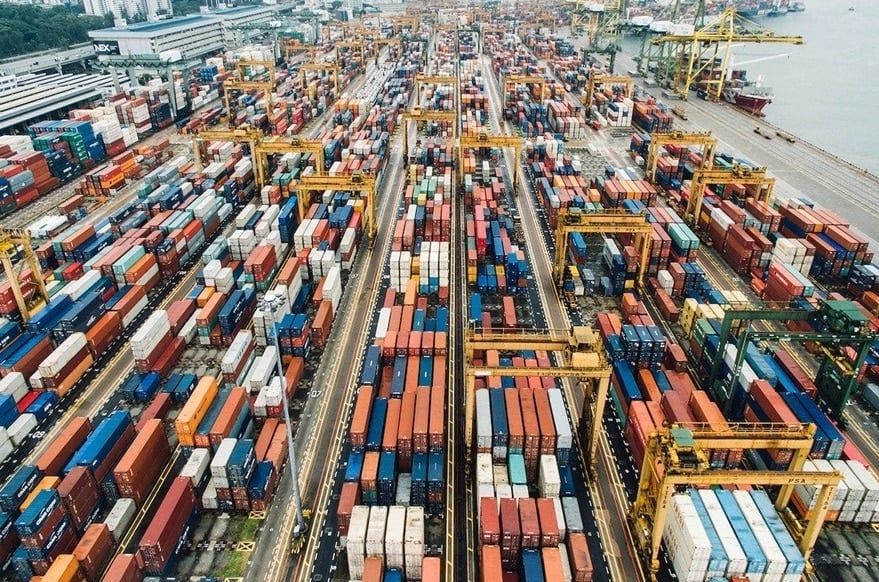
China once again responded on April 11, raising its tariffs on all U.S. goods by another 41%, bringing the total tariff against U.S. goods to 125%. Crucially, China stated it had no interest in further tariff increases. Instead, its Ministry of Commerce warned of unspecified “countermeasures” if the U.S. persisted, with limiting the transportation of goods being a potential, highly effective method. China reiterated its openness to negotiation, while Trump claimed he was awaiting a call from Beijing.
Despite the continued tit-for-tat, Apple’s stock rebounded on April 11, closing at $198.15. The broader markets also saw gains, with the Dow rising 619 points. White House press secretary Karoline Leavitt expressed Trump’s “optimism” for a U.S.-China tariff deal, stating he was “open to a deal with China,” which likely contributed to the market’s positive sentiment.
In a pivotal late-night announcement on April 11, President Trump issued a comprehensive set of exemptions on reciprocal tariffs, specifically sparing smartphones, computers, and chips. This move effectively saved Apple and other tech companies from potentially billions in import fees. The reprieve applied across almost Apple’s entire product line, though accessories like leather goods and Apple Watch bands were notably excluded and would still face tariffs.

However, this relief proved temporary. On April 13, clarifications emerged that the exemptions were indeed provisional, with other tariffs on the horizon. Commerce Secretary Howard Lutnick explained that a future “semiconductor tariff” would be applied instead, likely within “a month or two.” The stated aim of this new tariff was to incentivize component makers to establish facilities in the United States, thereby reducing reliance on Southeast Asia for electronics.
China, adhering to its pledge of non-tariff responses, escalated the trade war on April 14 by halting exports of several rare earth minerals and magnets. These materials, crucial for producing components in various industries, including tech, were placed on an export control list, requiring a license from the Ministry of Commerce for export. Given China’s near-monopoly on these minerals (around 90% of the market), this move created significant uncertainty for manufacturers worldwide, forcing them to rely on existing stockpiles and face intense competition for alternative supplies.
Adding a layer of intrigue to the tariff saga, President Donald Trump effectively admitted on April 14 that his decision to reduce tariffs was influenced by his direct conversations with Tim Cook. Speaking to reporters, Trump stated he was “flexible” and likened the China tariff battle to navigating a wall, asserting, “Sometimes you have to go around it, under it, or above it.” He then definitively uttered, “I spoke to Tim Cook,” and “I helped Tim Cook recently. And that whole business. I don’t want to hurt anybody.”
To rationalize the tariff exemptions and the incoming semiconductor tariff, the White House on April 15 announced a Commerce Department investigation under section 232 of the Trade Expansion Act. This probe would “determine the effects on national security of imports of semiconductors, semiconductor manufacturing equipment, and their derivative products.” The timing of this investigation, reportedly initiated on April 1 but announced after Apple’s tariff reprieve, raised some eyebrows.
Product on Amazon: Trump’s Tariffs 2025: What you need to know about the bold agenda, how it will transform diplomacy and stabilize the U.S economy
Price: 12.99 USD
Rating: 2.6 Total reviews: 2
Shopping on Amazon >>
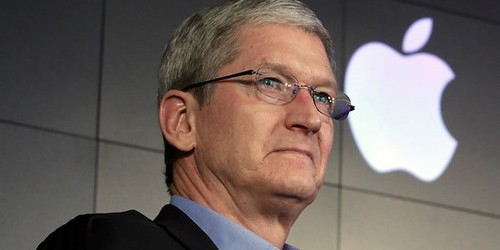
Further reports on April 17 solidified the notion of Cook’s influence, suggesting his call to Commerce Secretary Howard Lutnick earlier in April played a part in convincing the administration of the tariffs’ potential impact on iPhone prices. Cook’s strategy of avoiding public criticism of Trump, unlike other executives, was also noted as a factor. However, internal disagreements existed, with aide Peter Navarro reportedly opposing any electronics carveout.
Meanwhile, the European Union temporarily postponed fining Apple and Meta over alleged Digital Markets Act violations. An April 18 report indicated that the European Commission delayed a decision, initially planned for April 15, to avoid affecting ongoing trade negotiations between the EU and the U.S. This suspension coincided with high-level meetings between EU officials and President Trump.
Despite the temporary reprieve, the specter of escalated trade war effects continued to hang over Apple. An April 21 report by analyst Ming-Chi Kuo underscored the severe risks, noting that while U.S.-only high tariffs would be manageable for Apple, broader global tariffs on components originating from China could pose significant challenges. China reiterated its stance of “reciprocal countermeasures” if any deals were reached at its expense.
Apple’s internal dealings with the Trump administration also drew scrutiny. On April 23, Senator Elizabeth Warren raised concerns about potential “blatant corruption” and the “appearance of impropriety” regarding Cook’s interactions with Trump officials over tariffs. In a letter, she requested information about Cook’s attempts to influence the administration, though Apple was not legally required to respond.
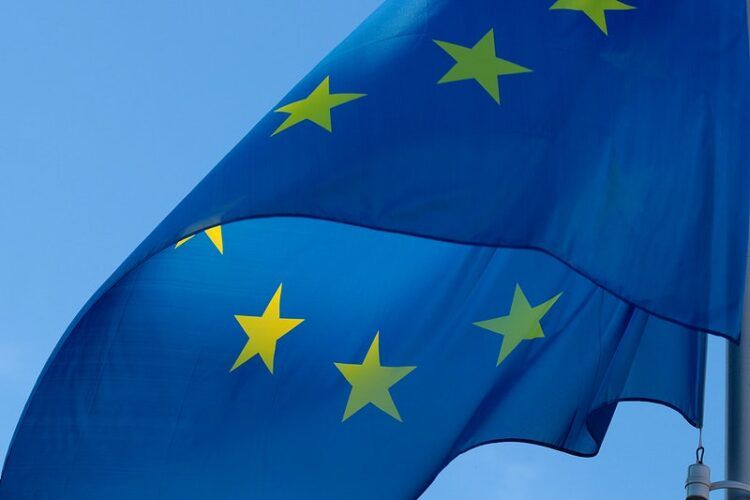
On the same day, the European Union finally issued a fine to Apple for non-compliance with its Digital Markets Act. However, the sum, a relatively modest $570 million compared to Meta’s $227 million, was reportedly kept low to avoid further increasing EU/U.S. trade tensions. Apple announced its intention to appeal, accusing the EU of discrimination and demanding that it provide its technology to rivals for free.
Uncertainty returned for Apple on April 24 when President Trump declared that the 90-day tariff pause would end sooner for countries not actively pursuing or accepting deal terms. This development specifically posed a greater risk to Apple’s manufacturing efforts outside of China, which were intended to diversify its supply chain.
Apple’s ambitious plans to expand its manufacturing presence in India also faced significant headwinds. An April 24 report detailed how Chinese-Indian tensions hampered these efforts, with the Indian government blocking Chinese suppliers from investing in India and issues with Indian employment law affecting Apple’s supply chain partners. Conversely, Chinese authorities reportedly obstructed work visas and machinery transfers to India, actively pressuring suppliers to remain in China to safeguard local employment.

Despite these complexities, prior to Apple’s Q2 results, many analysts held a similar view on future demand. Investor notes on April 28 suggested a “pull-forward” of demand, where both consumers and retailers would buy products earlier to avoid tariff-driven price increases, potentially benefiting Apple’s revenue. This theory hinted at Apple’s ability to capitalize on the very uncertainty that plagued the market.
However, the chairman of Pegatron, T.H. Tung, a key Apple supplier, issued a stark warning on April 29, cautioning that tariffs could lead to “third-world-style shortages” on U.S. shelves within two months, as people adopted a wait-and-see approach. Tung clarified that Pegatron would not immediately adjust its long-term plans or increase prices solely due to temporary tariff changes, emphasizing that “Manufacturing bases require long-term planning.”
Interestingly, on the same day, a false narrative emerged that Amazon planned to display the specific impact of tariffs on its sold items, prompting the White House to condemn it as a “hostile and political act.” Amazon quickly refuted this, clarifying that while an ultra-low-cost store team had considered the idea for certain products, it was never a consideration for the main Amazon site and had not been implemented anywhere.
In a revealing interview on April 29, U.S. Commerce Secretary Howard Lutnick relayed a conversation with Tim Cook, asserting that Apple’s CEO was keen to produce iPhones in the United States, contingent on the availability of advanced “robotic arms” capable of achieving the necessary scale and precision. This anecdote painted a picture of Apple’s long-term vision for domestic production.
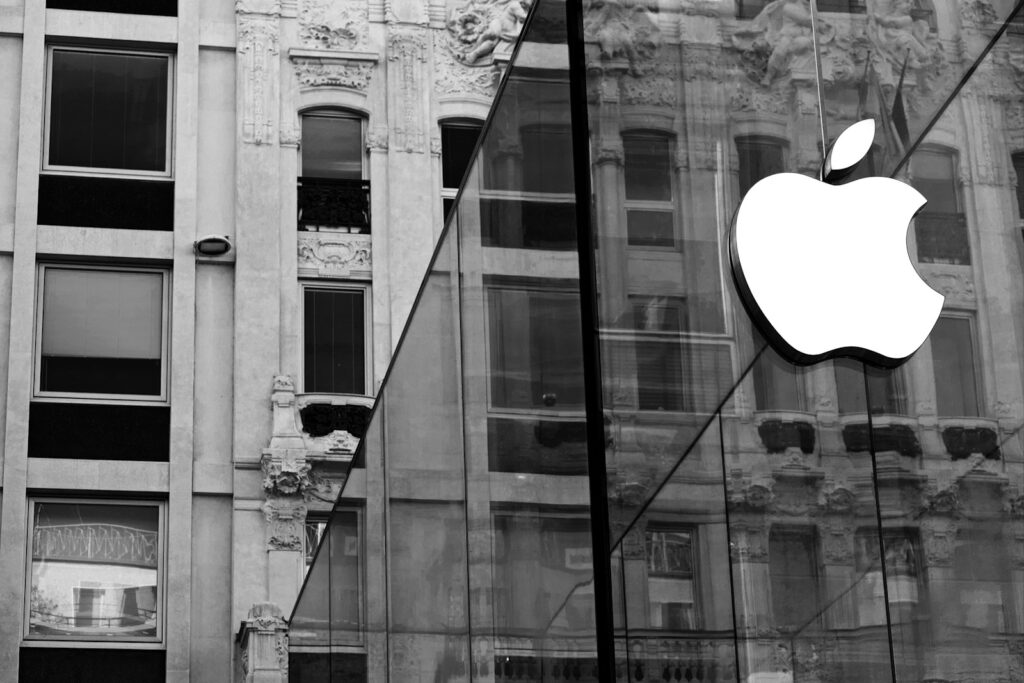
Adding tangible progress to Apple’s diversification efforts, two new iPhone factories in India became operational on April 30. India assembly partner Tata commenced production of older iPhone models, while Foxconn’s substantial $2.6 billion plant was nearing full operational status, marking significant strides in establishing alternative manufacturing hubs.
The May 1, 2025, Q2 results call provided further clarity. Tim Cook directly addressed the “panic-buying” hypothesis, stating, “We don’t believe that there was a significant pull forward due to tariffs into the March quarter.” He added that tariffs had a “limited impact” due to Apple’s supply chain and inventory optimization, though precise estimation of the Q3 impact was difficult. Cook noted that “most of our tariff exposure relates to the … 20% [rate], which applies to imports to the US for products that have China as their country of origin,” and that additional China tariffs raised the total rate for AppleCare and accessories to “at least 145%.” He estimated a $900 million tariff impact for Q3, assuming policies remained unchanged.
Apple’s journey through this labyrinthine world of global trade, geopolitical tensions, and shifting manufacturing landscapes is a testament to its adaptive strategies and unwavering focus. From record iPhone sales to ambitious investments in U.S. production and forward-looking AI advancements, the company continues to chart a course for growth. While the path ahead remains intertwined with the unpredictable currents of international policy and economic shifts, Apple’s recent performance and proactive measures underscore its determination to not merely survive, but to thrive, ensuring its iconic devices remain deeply embedded in a world rapidly reshaped by these forces.

